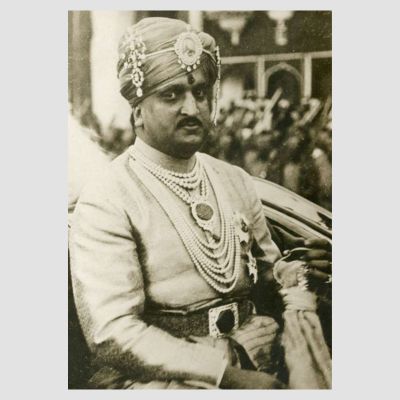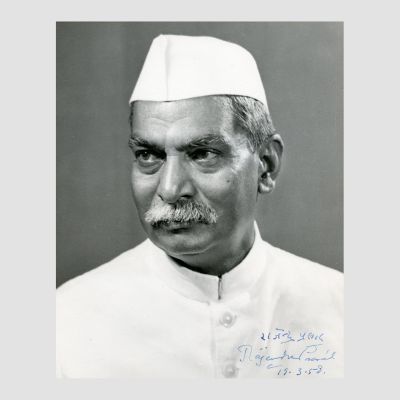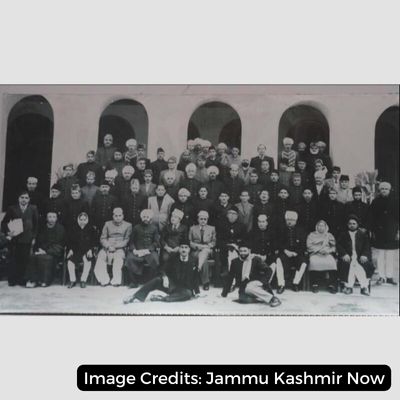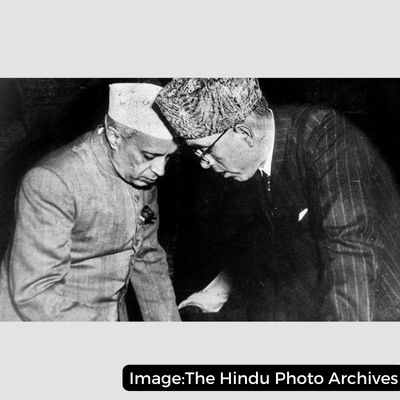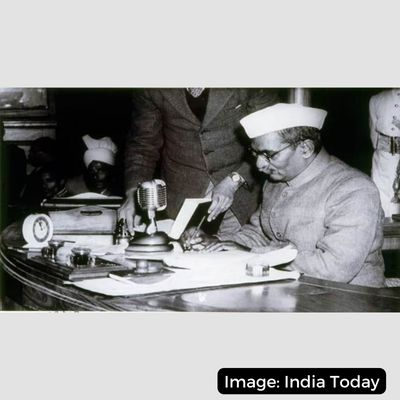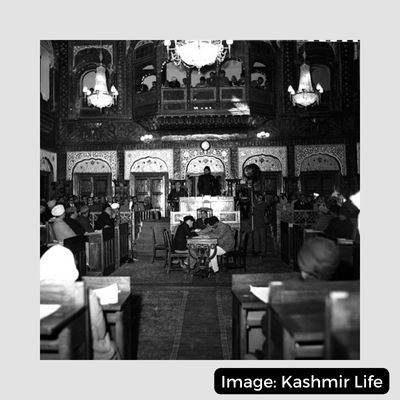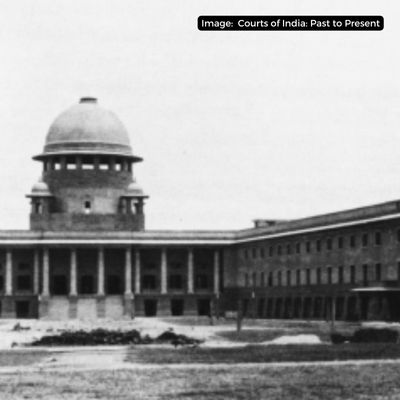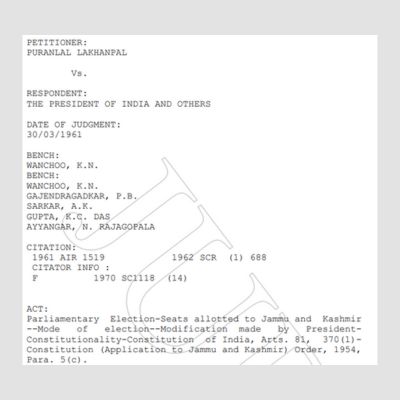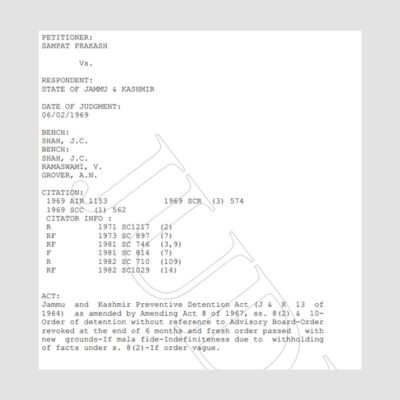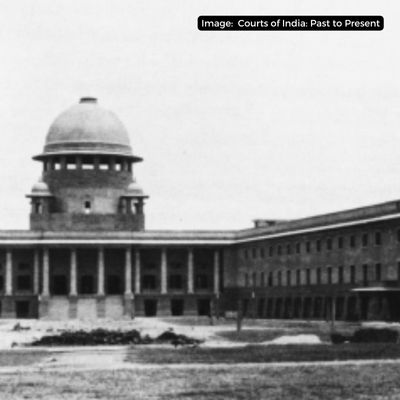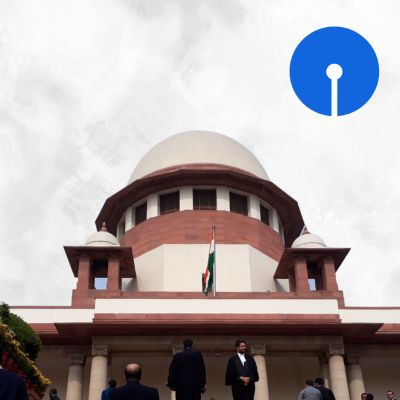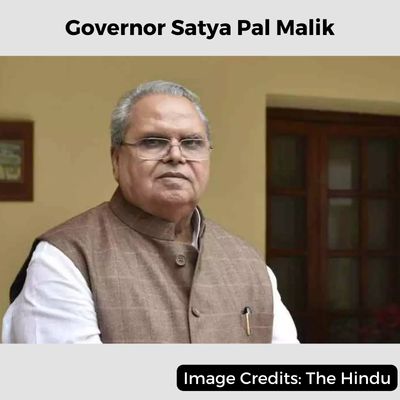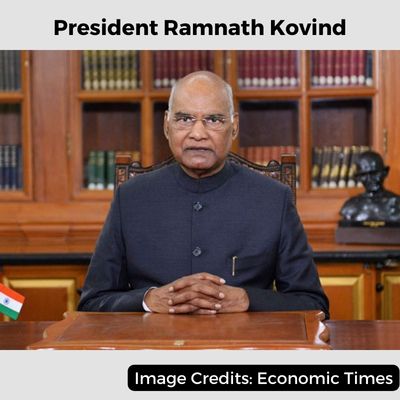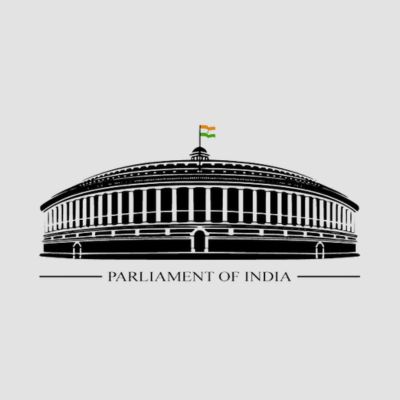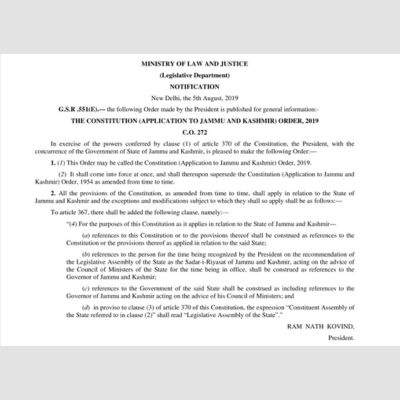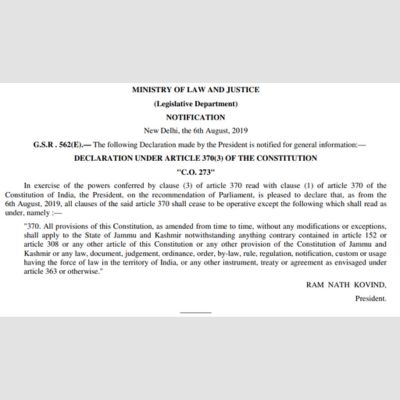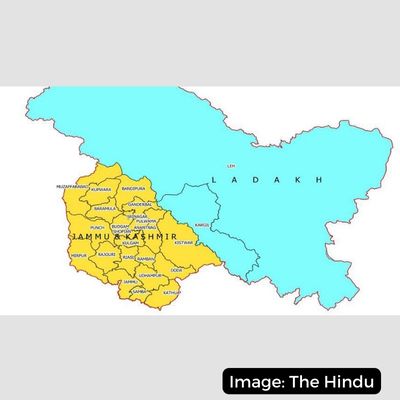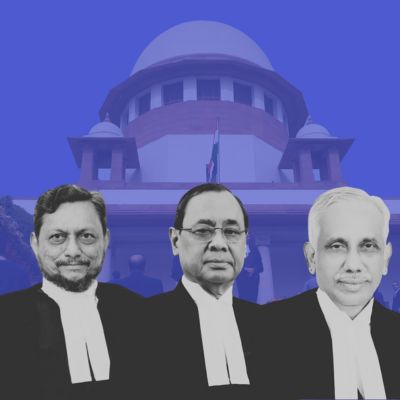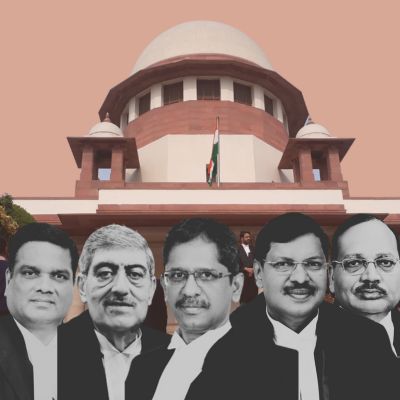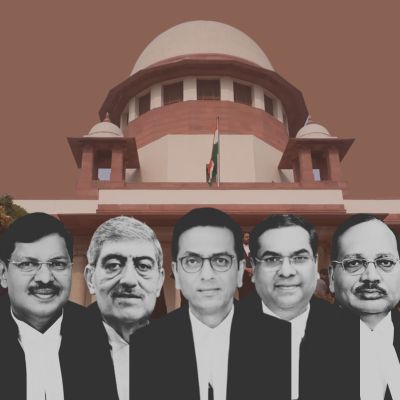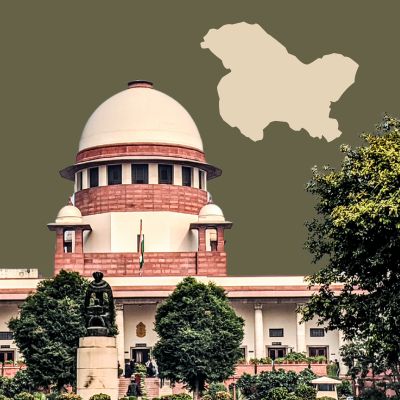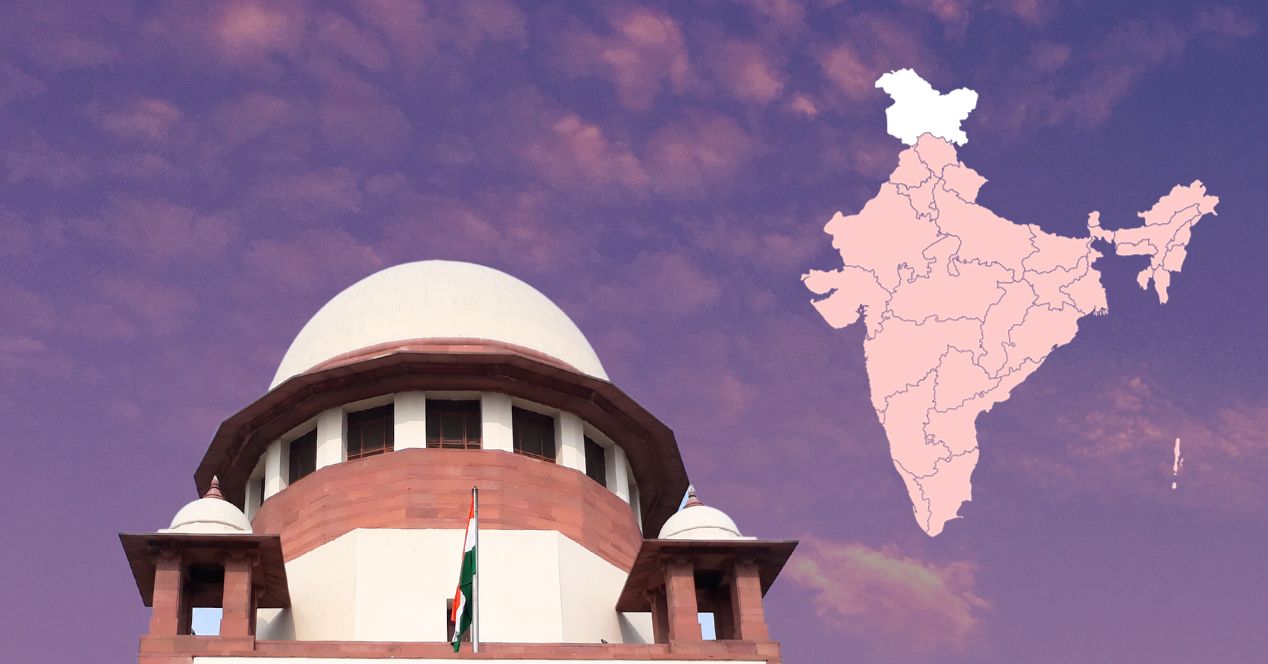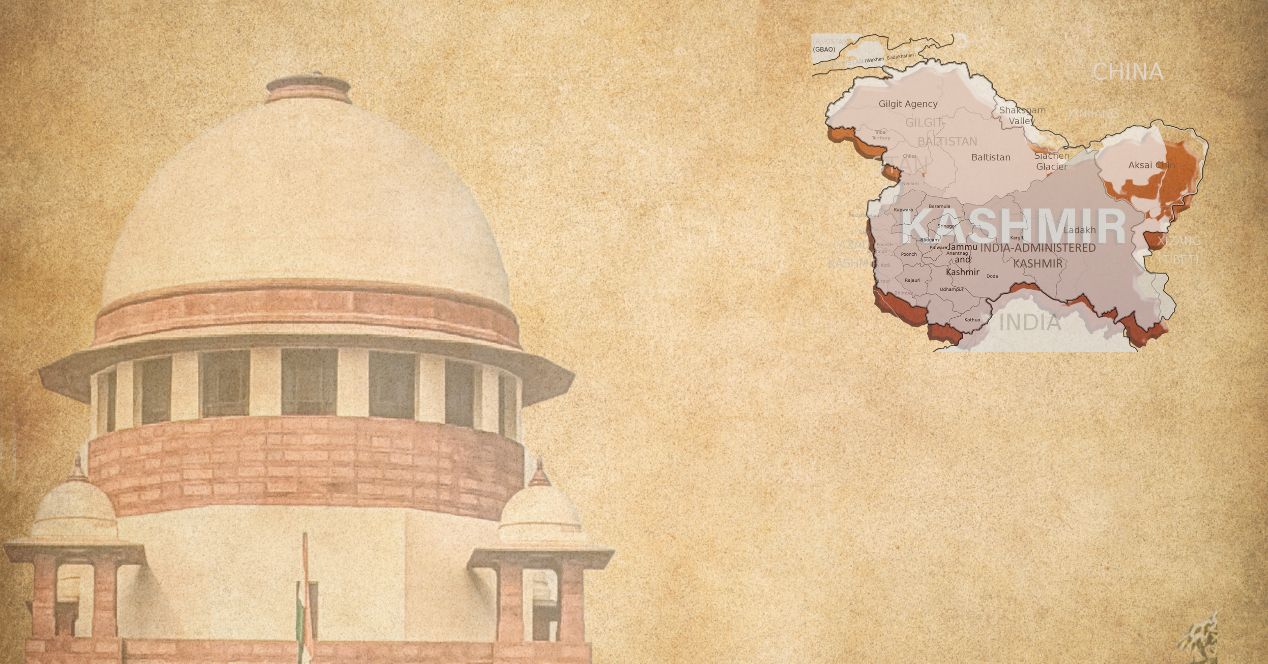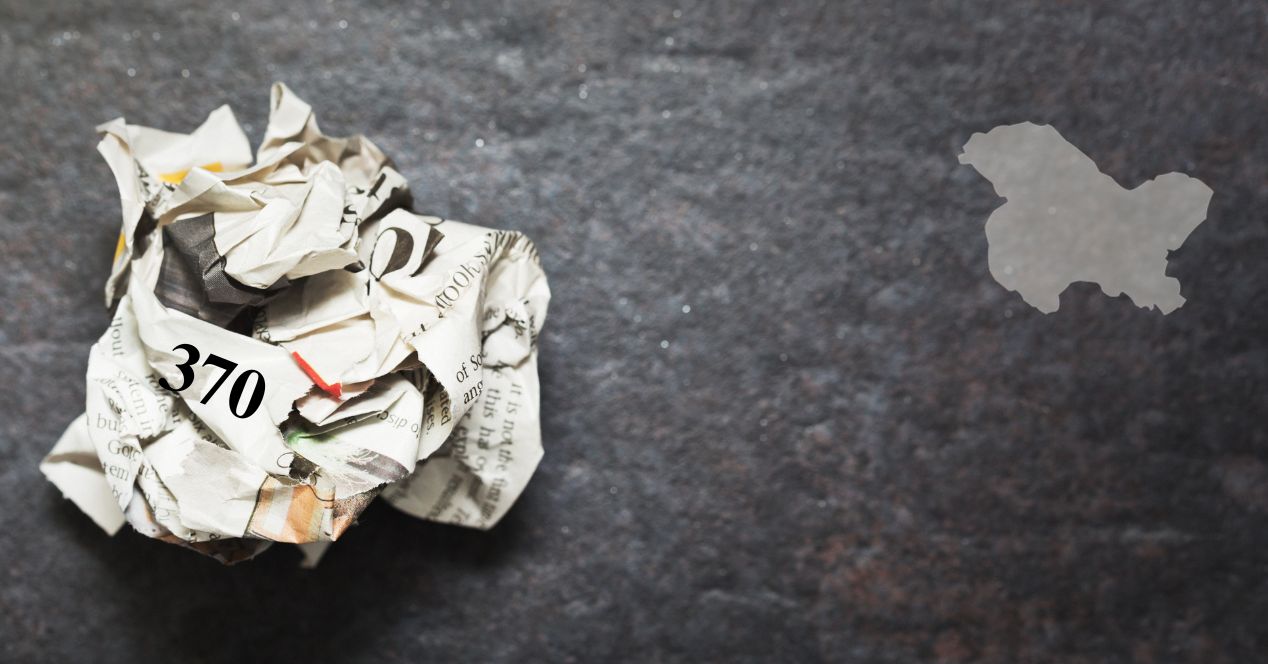Analysis
Article 370 of the Constitution: A Timeline
SCO tracks the evolution of Article 370 from 1947.
1947
Maharaja Hari Singh Signs the Instrument of Accession
On October 26th, 1947, Maharaja Hari Singh, the last ruler of Jammu and Kashmir, signed the Instrument of Accession acceding to the Dominion of India. The Maharaja agreed to allow the Parliament to govern three subjects and limited the Union’s powers to Foreign Affairs, Defence and Communications.
1950
Constitution of India Comes Into Force | January 26
On January 26th, 1950, the Constitution of India came into force. Article 370 set three broad frameworks. Broadly, Article 370 stipulated India would not make laws in Jammu & Kashmir outside the scope set out by the Instrument of Accession, without the ‘concurrence’ of its government. Further, it stated that except Article 1, which declared India as a ‘Union of States’, and Article 370 itself, no part of the Constitution would apply to Jammu & Kashmir. The President of India could make any provisions of the Constitution to apply to this State with ‘modifications’ or ‘exceptions’, but required only in ‘consultation with the Government of the State’. Thirdly, Article 370 itself could not be amended or repealed—unless the Constituent Assembly of Jammu & Kashmir consented to it.
1950
The President Issues First Constitutional Order Under Article 370 | January 26
Subsequently, the President of India Rajendra Prasad issued his first order, the Constitution (Application to Jammu and Kashmir) Order, 1950, under Article 370, which specified the scope and full extent of the powers that the Parliament would exercise in Jammu and Kashmir. The Instrument of Accession had agreed that the Union would govern external affairs, communications and defence of the State. The President’s order listed the exact subjects that would fall within these categories. The Order also introduced Schedule II which listed the modified provisions of the Constitution that would apply to the State.
1951
Constituent Assembly of Jammu and Kashmir is Formed
On October 31st, 1951, 75 members of the Jammu and Kashmir Constituent Assembly gathered for the first time on an autumn day in Srinagar. They belonged to the National Conference Party led by then Prime Minister of Jammu and Kashmir, Sheikh Abdullah. Their goal was to draft a Constitution for Jammu and Kashmir.
1952
The Delhi Agreement is Formed
The Delhi Agreement, 1952, was between the Government of India and the Government of Jammu and Kashmir. The agreement concerned residuary powers (Article 248) exercised by the Parliament that fell outside of the scope of the State or Concurrent Lists. The Delhi Agreement stated that such powers would be vested in the hands of the Government of Jammu and Kashmir. Typically, the Union parliament exercises all residuary powers in other states. The Delhi Agreement also extended some provisions of the Indian Constitution to the state, namely, fundamental rights, citizenship, trade and commerce, Union elections, and legislative powers. Prime Minister Sheikh Abdullah in the Constituent Assembly stated— ‘The Residuary powers vested in the Centre in respect of all States other than Jammu and Kashmir, in the case of our State, they are vested in the State itself. This position is compatible with Article 370 of the Indian Constitution and the Instrument of Accession on which the Article is based. We have always held that the ultimate source of sovereignty resides in the people. It is, therefore, from the people that all powers can flow’. Click below to read the Constituent Assembly Debates of Jammu and Kashmir.
1954
President issues the Constitutional Order of 1954, Implements Delhi Agreement
On May 14th, 1954, President Rajendra Prasad issued the Presidential order to implement the terms agreed to in the Delhi agreement of 1952 of the Indian Constitution. The presidential order guaranteed territorial integrity to Jammu and Kashmir and introduced Article 35A which conferred special rights to permanent citizens of Jammu and Kashmir. This order was passed with the concurrence of the Constituent Assembly of Jammu and Kashmir.
1957
Constitution of Jammu and Kashmir Comes Into Force
After a five year process, on January 26th, 1957, the Constitution of Jammu and Kashmir came into force with a declaration—‘The State of Jammu and Kashmir is and shall be an integral part of the Union of India’. The day before that, on January 25th, 1957, having completed the task they were formed for, the Constituent Assembly of Jammu and Kashmir dissolved at 12:00 P.M. noon. The President of the Constituent Assembly, Hon’ble Gulam Mohammed Sadiq announced—‘Today this historic session ends and with this the Constituent Assembly is dissolved’. The Constituent Assembly made no express recommendation to dilute Article 370. Click below to read the Constituent Assembly Debates of Jammu and Kashmir.
1959
SC Holds that All Presidential Orders are Subject to the Approval of the Constituent Assembly
In Prem Nath Kaul v Union of India, the Supreme Court highlighted the significance of the ‘final decision of the Constituent Assembly’ of Jammu and Kashmir under Article 370(3). This provision mandates that a declaration by the President is subject to approval by the Constituent Assembly. The case involved the constitutionality of the Big Landed Estates Abolition Act, 1950, which was challenged by the petitioners on the grounds that the Maharaja of Jammu and Kashmir, who enacted the Act, lacked legislative powers to do so. The Supreme Court upheld the Act, ruling that the Maharaja indeed possessed legislative powers to pass it.
1962
SC holds that President Has Wide Powers to Amend Constitutional Provisions in Jammu and Kashmir
In Puranlal Lakhanpal v The President of India, a Presidential Order allowed Jammu and Kashmir to be represented in the Lok Sabha only through indirect elections, while other states had direct elections. The Order modified the application of Article 81 which pertains to the composition of the Lok Sabha to exclude Jammu and Kashmir. Petitioners challenged the Order contending that the President can only make ‘minor’ modifications to constitutional provisions. The Supreme Court upheld the Presidential Order, stating that the word ‘modification’ in Article 370 should be interpreted broadly to include even an amendment. The Court ruled that the term ‘modification’ should be given the ‘widest possible amplitude’ within the context of Article 370.
1968
SC Holds that Article 370 is a Permanent Feature of the Constitution
In the case of Sampat Prakash v State of Jammu & Kashmir, the Supreme Court dealt with the constitutional validity of two Presidential Orders extending the application of Article 35(c) in Jammu & Kashmir. Article 35(c) was a special provision which provided immunity to preventive detention laws from fundamental rights claims in the state. The petitioners argued that Article 370 ceased to exist after the dissolution of the Constituent Assembly, and therefore, the President was no longer empowered to make orders under Article 370(1). The Supreme Court held that Article 370 would continue to exist even after the Assembly’s dissolution. This verdict implied that Article 370 had achieved permanent status in the Constitution, despite the absence of the Constituent Assembly.
1972
SC Holds that the President Can Amend Interpretation of Certain Words Through Article 370
In the case of Maqbool Damnoo v State of Jammu & Kashmir, the President issued an Order to modify Article 367, the interpretation clause of the Constitution, to change the meaning of ‘Sadar-i-Riyasat’ to ‘Governor’. The petitioners challenged this Order, arguing that it lacked the ‘recommendation’ of the Constituent Assembly, which had already dissolved. The Supreme Court upheld the validity of the Presidential Orders. The Court viewed the Amendment as a mere clarification since the office of the ‘Sadar-i-Riyasat’ no longer existed. According to the Court, the Governor had succeeded the ‘Sadar-i-Riyasat’ and was entitled to exercise all the powers previously vested in that office.
2016
SC Holds: Article 370 will Cease to Operate Only After the Recommendation of the Constituent Assembly
In State Bank of India v Santosh Gupta, the Supreme Court addressed a challenge against the Securitisation and Reconstruction of Financial Assets and Enforcement of Security Interest Act, 2002, a Union government legislation. The petitioners contended that this Act clashed with the Jammu and Kashmir Transfer of Property Act, 1920— legislation specific to Jammu and Kashmir. The Supreme Court upheld the Union’s legislation. During the hearings, the Supreme Court observed that there was no definitive timeline mentioned for the operation of Article 370. The provision would continue to be in effect until a recommendation from the Constituent Assembly was made for its cessation. This judgement further bolstered the idea that the consent or concurrence of the Constituent Assembly of Jammu and Kashmir was crucial to repeal Article 370.
2018
Governor’s Rule in Jammu and Kashmir | June 20
The imposition of the Governor’s rule in Jammu and Kashmir occurred as a result of a political breakdown when the Bharatiya Janata Party (BJP) withdrew its support from the People’s Democratic Party (PDP). Under Article 92 of the Constitution of Jammu and Kashmir, the Governor’s rule cannot be extended beyond six months. Consequently, the Governor’s rule came to an end on December 19th, 2018.
2018
Jammu and Kashmir under Presidents Rule | December 19
On December 19th, 2018, President Ram Nath Kovind issued a proclamation imposing President’s Rule in Jammu and Kashmir under Article 356 of the Constitution of India. This came at the heels of the Governor’s Rule imposed in June 2018. This proclamation was approved by both houses of the parliament in December 2018 and January 2019. The proclamation replaced the Legislative Assembly and Governor with the Union Parliament and the President.
2019
Presidents Rule Extended by 6 Months | June 12
The President’s Rule over Jammu and Kashmir was expected to expire on July 2nd, 2019. The Union Cabinet extended this by six months, starting from July 3rd 2019. The decision to extend the President’s Rule was based on a report prepared by the Governor of Jammu and Kashmir, stating that the ‘prevailing situation in Jammu and Kashmir’ requires further continuation of the rule.
2019
President Issues an Order Amending the Meaning of ‘Constituent Assembly’ | August 5
In a move resembling Maqbool Damnoo, President Ramnath Kovind issued an Order (C.O. 272) amending the interpretation of ‘Constituent Assembly’ under Article 370(3) to ‘Legislative Assembly’ by amending Article 367—the interpretation clause. Specifically, this meant that any presidential order would be subject to the approval of the ‘legislative assembly’. As Jammu and Kashmir was under President’s Rule, the need for the consent of the ‘legislative assembly’ was satisfied by the Parliament. Notably, the Constituent Assembly had been dissolved for over 60 years, and there was no functioning ‘legislative assembly’ due to the imposition of the Governor’s rule (June 2018) and subsequent President’s rule (December 2019). The Presidential order was issued a month after the President’s rule was extended for six more months (July 2019).
The Rajya Sabha passed a statutory resolution which recommended the abrogation of Article 370, and the Jammu and Kashmir Reorganisation Act, 2019.
2019
Abrogation of Article 370 | August 6
The Lok Sabha passed the statutory resolution and the Reorganisation Act which was approved in the Rajya Sabha on the previous day. President Ramnath Kovind issued a subsequent Order (C.O. 273) rendering Article 370 redundant, thereby removing the special status granted to Jammu and Kashmir. The Order resulted in all provisions of Article 370 ceasing to operate, except clause 1. Clause 1 of Article 370 states that the Constitution of India will operate in the State of Jammu and Kashmir.
2019
Jammu and Kashmir is Bifurcated into Two Union Territories | August 9
The Union Parliament passed the Jammu and Kashmir Reorganisation Act, 2019, which split the state of Jammu and Kashmir into two Union territories—Jammu and Kashmir, and Ladakh. It was decided that the Union Territory of Jammu and Kashmir would have a legislative assembly, meanwhile, Ladakh will not. Union Home Minister Amit Shah stated that the reorganisation will boost tourism, development, and industries in the Union territory.
2019
Constitutionality of the Presidential Order is Referred to a 5-Judge Bench | August 28
A 3-Judge Bench led by former Chief Justice Ranjan Gogoi, along with former Chief Justice S.A. Bobde and Justice Abdul Nazeer, commenced hearing arguments on the Constitutionality of the Order. Following two days of arguments, the Bench deemed it essential to refer the matter to a Constitution Bench for further consideration. Click below to see a copy of the reference order.
2020
Supreme Court Refuses to Refer the Matter to a Larger Constitution Bench
In Shah Faesal v Union of India, a 5-Judge Bench led by former Chief Justice N.V. Ramana, with Justices S.K. Kaul, R. Subhash Reddy, B.R. Gavai and Surya Kant refused to refer the case to a larger bench. The petitioners stated that there exists a conflict between the rulings in Prem Nath Kaul, Sampat Prakash and Maqbool Damnoo. They argued that Prem Nath Kaul established the requirement for the Constituent Assembly’s approval before the President could exercise his powers, and once the Constituent Assembly dissolved, so did the President’s powers. The subsequent decisions in Sampat Prakash and Maqbool Damnoo directly contradicted the Prem Nath judgement by upholding the validity of Presidential orders even after the Constituent Assembly had dissolved. The petitioners argued that the direct conflict between the rulings called for a reference to a larger Constitution bench. The Bench rejected these arguments, asserting that there was a fundamental difference in the circumstances of Prem Nath and Sampat Prakash. The Supreme Court emphasised that Prem Nath Kaul did not address the question of the continued relevance of Article 370 after the dissolution of the Constituent Assembly, which makes it distinguishable from the subsequent cases. Read SCO’s judgement summary below.
2023
Article 370 is Listed Before a New 5-Judge Bench | July 3
On July 3rd, 2023, the Supreme Court assigned the Challenge to the Abrogation of Article 370 to a new Constitution Bench, headed by Chief Justice D.Y. Chandrachud, along with Justices S.K. Kaul, Sanjiv Khanna, B.R. Gavai, and Surya Kant. They are also the five senior-most judges of the Supreme Court. The single-page notification indicated that the new Constitution Bench will take up the matter for further directions on July 11th, 2023. The new Bench saw the replacement of former Chief Justice N.V. Ramana and Justice Subhas Reddy with Chief Justice Chandrachud and Justice Sanjiv Khanna. Click below to see a copy of the listing notice.
2023
Constitution Bench to Start Hearing the Challenge from August 2nd 2023 | July 11
Lawyers representing the petitioners and the Union government gathered inside Courtroom 1, the CJI’s Court, at 10:30 AM to discuss the roadmap of the challenge. The Bench led by the CJI stated that the hearings will commence on August 2nd, 2023, almost four years after the Presidential Order which stripped Jammu and Kashmir of its special status. The case saw a new cause title— ‘In re: Article 370 of the Constitution’, as the lead petitioner withdrew the case. The Supreme Court will hear 22 petitions challenging the Abrogation of Article 370. Click below to see a copy of the Order.
2023
Constitution Bench Reserves Judgement | 5 September
On 5 September 2023, the Constitution Bench reserved judgement after 16 days and 60+ hours of hearings. Senior Advocate Kapil Sibal argued for the longest time for 14 hours, followed by Solicitor General Tushar Mehta who argued for 11 hours. Only three of the advocates on either side were from Kashmir. Key issues discussed included Kashmir’s internal sovereignty, the scope of the powers of the President during the President’s Rule, and the legitimacy of the Constituent Assembly of Jammu and Kashmir.
2023
Constitution Bench upholds Union’s abrogation of Article 370 | 11 December
The Bench unanimously held that Article 370 was a temporary provision designed to accommodate the integration of Jammu and Kashmir with the rest of India. In the 476-page judgement, CJI Chandrachud wrote the majority opinion on behalf of himself and Justices Gavai and Kant. Justices Kaul and Khanna wrote a separate concurring opinion.
The Bench held that Jammu and Kashmir had no internal sovereignty but was a feature of asymmetric federalism. In a small win for the petitioners, they declared that para two of CO 272 was unconstitutional because it used the interpretation clause under Article 367 to amend Article 370. However, the Bench pointed out that the President of India had applied all provisions of the Constitution to Jammu and Kashmir under Article 370(1)(d) which had the “same effect” as declaring that Article 370 ceases to exist. C.O. 272 as a whole was upheld. Subsequently, they held that the President also had the power to abrogate Article 370 without the recommendation of the Constituent Assembly of Jammu and Kashmir. Through this, the Bench upheld CO 273.
The Bench left the constitutionality of the reorganisation of Jammu and Kashmir into the Union Territories of Jammu and Kashmir, and Ladakh unanswered, in light of Solicitor General Tushar Mehta’s assurance that statehood to J&K would be returned soon. They upheld the decision to carve out the Union Territory of Ladakh.
Lastly, the judgement held that the Constitution of Jammu and Kashmir was inoperative after the abrogation of Article 370.

